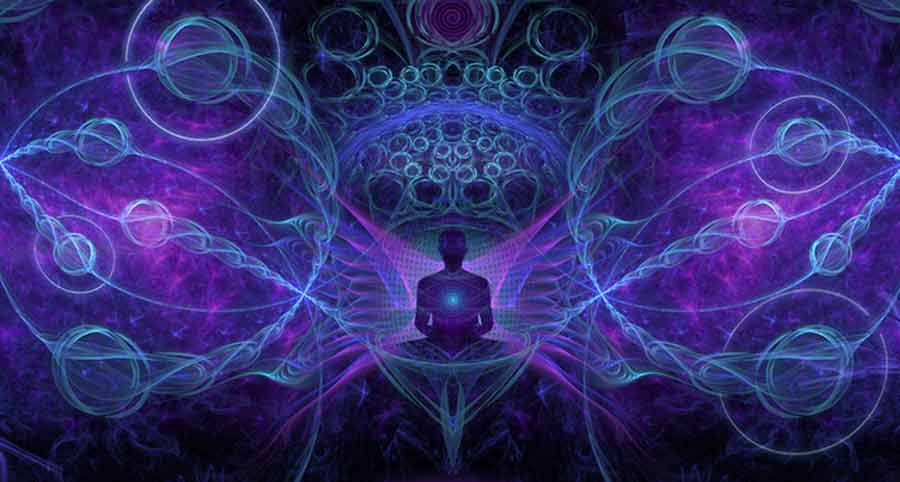
Interconnectedness
Introduction – Lament for Humankind
Thomas Berry speaks eloquently on the Earth’s behalf. His fear is unless humanity reconnects with the Earth as “Mother” then humanity will not survive. He
laments humanity’s loss of connection with Mother Earth, the old religion of our ancestors, where everything was sacred and humans recognized their
inter-connectedness with Nature. He argues that in order to survive we must create a new Earth narrative that reignites our awe of Creation and our desire
to relate to our fellow creations.
I share Berry’s view that we have become disconnected with the Earth and Mother Nature. But my solution, my new Earth narrative, begins with the question,
is humankind really meant to survive?
Mother Nature is an intelligent force that that has experimented with her Earth laboratory for 4.5 billion years. She has created hundreds of millions of
diversified species. Her project has not only been creative rather it has been a trial to maintain balance within a system of so many diversified beings.
Each new mutations had the possibility to disrupt the balance; yet, Mother Nature adapted and discovered an approach to maintain Earth’s equilibrium, even
if it meant the extinction of a species. Mother Nature does not fear extinction for her view is expansive and infinite. If Earth is out of balance as a
result of human technology, waste and over-population, why would we imagine that Mother Nature does not have a means nor the intention to bring the system
back into balance?
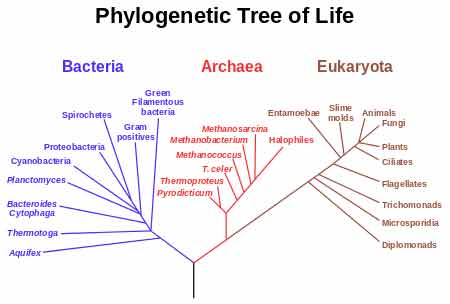
Phylogenetic tree. A speculatively rooted tree for rRNA genes,
showing the three life domains Bacteria, Archaea, and Eucaryota,
and linking the three branches of living organisms to the
last universal common ancestor (LUCA)
Our Bacterial Ancestors
Evolutionary scientists have re-organized the evolutional map into a circular mandala with bacteria as the cosmic bindu, called a phylogenetic tree. All
animal and plant life stems from bacteria. From the first single-celled bacteria, “new codes were developed within the interplay of the various living and
nonliving energy systems” (Berry 71).Bacteria were not only the seeds of life on Earth. They likely carried the origins of culture, that is, language,
government and cooperative communities (Basler 15:06).
Microbiologists’ new research shows that bacteria use language. Bacteria “make chemical words, they recognize those words (Basler 07:46). Bacteria speak
two languages: Their mother tongue and the language of their species. Yet there is a single common language, the lingua franca, common to all bacteria.
Darius I may have been the first human ruler to establish Aramaic as the official langua franca across his conquered territories, but the genesis was
inherited from his bacterial ancestors.
Like our democracies, bacteria “vote with these chemical votes, the vote gets counted, and then everybody responds to the vote” (Basler 07:46). Quorum
sensing is when “they turn on group behaviors that are only successful when all of the cells participate in unison” (Basler 08:19). There are hundreds of
collective bacterial behaviors that have enabled bacteria colonies to survive onslaughts from foreign invaders and perform tasks which benefit their family
members.
Through language and voting, bacteria create communities. Bacterial cultures are minute cities made up of diverse bacteria that have organized to live in
harmony with and for the benefit of each other. Immediately upon meeting, bacteria species exchange information and share their knowledge on how they
survived the surrounding environment. They exchange genetic coding so each strain becomes stronger by having met the other. Together they build communities
that generate electricity for the community’s benefit. Like us “bacteria have these collective behaviors, and they can carry out tasks that they could
never accomplish if they simply acted as individuals” (Basler). It appears that not only have humans developed from bacteria, we inherited their ability to
communicate across cultures, build communities through consensus, develop defensive and offensive systems, and share an expanding knowledge base.
Bacterial were not only our ancestors. They are the most significant component of our human biome. Molecular biologists now describe the body as composed
of one trillion human cells and ten trillion bacteria cells. “Humans are more bacterial than human” (Basler). We are closer to being ninety-nine percent
bacterial. Our bodies are literally bio-spheres of a huge diversity of bacteria and human cells that have organized into a conscious form.
Berry states this eloquently, referring to our ancestral bacteria as “the creative genius of the earlier life processes on the Earth, as well as its
principle instrument of education,…genetic coding” (Berry 71). Microbiologist Bonnie Basler says, “It's the DNA that counts, so here's all the A, T, Gs and
Cs that make up your genetic code, and give you all your charming characteristics. You have about 30,000 genes. Well it turns out you have 100 times more
bacterial genes playing a role in you or on you all of your life” (Basler). Berry makes the point the genetic coding that developed into the ability of
hominid’s to speak and to create culture indicates humans are the Universe’s “most intense expression” and “the supreme expression of human genius” (Berry
72).
If humanity is Mother Nature’s “most intense expression”, then it would seem Mother Nature meant for bacteria to evolve into humans. If humanity was not a
mistake, then why would Mother Nature would allow this particular mutation to expand so far as to cause destruction, not only of its own species, but also
of other species?
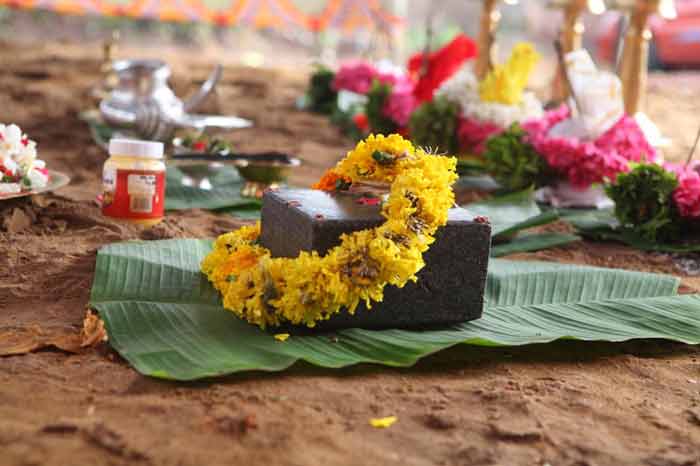
Bhoomi pooja ceremony to honour the Earth
Divine Inter-connectedness
Indigenous people and our older ancestors worshipped Earth as their Divine Mother. They were in awe of her creative power and celebrated it. Many native
cultures honored the Earth as mother just as they honored their human mothers. They felt close to all of nature and felt themselves to be a part of Earth’s
creative cycles.
I have come to the conclusion that as beautiful as that relationship was, Mother Nature, in her eternal creative dance, desired to expand beyond her
Earthly limits. For that to occur, it was necessary that her “most intense expression” to pull away from her, to see themselves as separate, not part of
nature, but surviving and thriving despite Nature. As the ancient legends tell the story She bestowed the gift of language, agriculture, husbandry, and
civilization to mankind. This allowed humanity’s conscious to evolve into a rational mind that could think for itself and to develop man-made technologies,
tools, weapons, and technologies for travel. As humans became more conscious, they began to view that life as being difficult, filled with suffering. The
yogis, or people like the Indian yogis, began to envision a different way of being – liberated from Mother Earth and her cycles. This was an important
step. For as human consciousness began to imagine a different way of being, that set the seed, or the intention, to get off the Earth. This movement first
occurred spiritually. Centuries later, this spiritual seed, became a manifested reality when the human species, men and women, literally left the Earth on
rocket ships.
I argue this was the “plan”. After 4.5 billion years of experimenting and evolution, with the advent of space travel, Mother Nature has managed to spread
her basic building block, bacteria, to new venues (Buhner). As scientists have sent spacecraft to the moon and beyond, bacteria have traveled along,
surviving the intense cold and ultraviolet radiation of space travel. After creating life (and weather) on Earth, bacteria have landed on the moon and Mars
and have likely begun taking root for their three billion year growth cycle. Mother Nature needed humanity to evolve and create the technology that enabled
her to break through the Earth’s atmosphere and spread her seed to new spheres. What she has learned on Earth will re-create a world, starting at the
beginning with bacteria (Buhner). Mother Nature has succeeded, through patiently creating, experimenting and watching her creations become extinct. Unlike
humankind, Mother Nature does not fear our demise, our extinction. For just as she has over the eons, she will continue her dance only with a different set
of partners.
Pulling back our lens, and expanding our vision of time, the Earth is not in danger of dying. Human, animal and some plant life is in danger of becoming
extinct. Yes, the Earth is facing “an assault of unprecedented violence”: rainfall is sulfuric and toxic, the rivers and seas are severely polluted; the
atmosphere is saturated with hydrocarbons and the land is impoverished with asphalt, concrete and mining. (Berry 66). Yes “we have now disturbed the
biosphere brought about by a technology for which nature has no limiting forces short of suffocating the human perpetrators with their own waste products”
(Berry 66). But if Nature’s latest invention, humans, poisons itself and dies off, the Earth will not lament our passing. For as Berry notes, the Earth is
a “self-emergent, self-nourishing, self-governing, self-healing community” (Berry 71).
Balance and Intimacy
The Earth requires balance. When ecosystems become out of balance, the players must adapt or die (Buhner). I agree with Berry that if humanity wants to
survive then we must become more integrated with the Earth and once again become relevant in her eyes. We must change our narrative to one of supreme
devotion. We must demonstrate that we can use our technology, and creative freedom to make ourselves culturally relevant and interact with other life forms
to create a mutually beneficial ecosystem. Our spirits must reconnect with the spirits of bacteria, plants, animals, the minerals in the soil, the air and
the water elements. It requires bringing our conscious awareness to all of these earthly presences. We must devote our entire life to replenishing Her
balance. As Berry wrote,
Our intimacy with the universe demands an alternative presence to the smallest particles as well as to the vast range of stars splashed across the skies in
every direction. More immediately present to our consciousness on Earth are the landscapes, the sky above, the Earth below; the grasses, the flowers, the
forests, and the fauna that present themselves to our opening senses. Each in its own distinctive perfection fills our mind, our imagination, our emotional
attraction (Berry 34).
The intimacy I suggest is more than simply viewing humans as stewards of the Earth. It requires a sadhana that helps us explore and acknowledge the
divinity in all the animal, vegetable and mineral kingdoms. Traditional Christianity, Islam and Judaism cultures do not currently carry the answer. In fact
it was found, “that the more extensively people participate in religious activities, the less likely they are to be concerned with the natural
world...Religious attention is directed toward moral conduct, social injustice, pietistic practices, and interior meditation experiences” (Berry 48). Berry
believes it will take a new narrative, “a biospiritual story as well as a galactic story and an Earth story...Everywhere at all times, and in each of its
particular manifestations, the universe is present in itself…The Earth is a single if highly differentiated community. This is the quintessential way of
understanding the universe” (Berry 57).
I came to a similar understanding through my meditation practice. Starting in 2011, in many of my meditations, I often journeyed to a great tree in a
forest. A small door, hidden in a crook at the base of the tree would open, welcoming me. Ducking into the darkness, I reached the tree’s center and found
myself in a circular library lining the trunk’s interior. The book shelves towered above me and disappeared into the darkness of the upper limbs. The books
contained all the knowledge of the Universe. However, I could not access them for I literally could not take them off the shelf. I visited this tree many
times and each visit I could only stare at the endless books. Months or years later, I was meditating outside, in my front garden. A misty presence
enveloped me making my skin prickle. Inside my head, a voice said,
“The plants carry all the knowledge you need.”
Then I found myself in the tree trunk library and all of the books started falling off of the shelves. They landed open at my feet and the words jumped
from the pages onto my skin.
I began experimenting to see if I could hear the plants’ secret teachings. As often as possible I meditated outside. I listened to the trees. I
acknowledged the flowers. I asked permission to lie on the grass. As I become more aware, more gentle and trustworthy, I felt the plants leaning into me,
appreciating my attention. My potted plants flourished and became more vibrant. I introduced new plants, increasing the diversity. Still, I waited for them
to reveal their secrets to me, to speak to me, but I heard nothing. However, I noticed a new kind of fly moved into the garden. A hive of bees built a nest
in the flower pots I put out. New birds’ nests were built in the tree and baby birds literally fell into our garden. In the afternoons when the garden was
shaded, Dragonflies flitted into the garden and rested on the aloe vera. Nature was rewarding my efforts and returning to show me what could be done with a
bit of attention and how with patience, and time, life returns.
At some point later, a friend called me on day to inform me she had some kefir she wanted to share with me. I did not know what kefir was nor why she
thought I might want some. She told me not to worry, “just Google it”, and she dropped by to show how to care for it.
This synchronicity brought bacteria into my life and my consciousness. As I learned how to use healthy bacteria to restore my intestinal tract (which I was
unaware needed healing), my health improved and my enthusiasm for bacteria grew. I learned that the bacteria from the soil and resides on our vegetables is
necessary for our human biome. I learned how to cultivate healthy bacteria. I learned that at our essence we are 99% bacteria, not human.
Today our societies fear bacteria. Inundating our homes and bodies with anti-bacterial products and anti-biotics, we are literally at war with our personal
biome, poisoning ourselves just as we are poisoning the Earth. If we want to live at peace with all of creation, we must first make peace with our human
biome. “Understand creativity and freedom at this level is wonderfully instructive for appreciating expressions of freedom and creativity in later phases
of human development” (Berry 71). When we understand that our creativity and freedom actually begins at the microbiotic level, we must consider why our
species’ continued sustainability and development is not integrated, or perhaps more importantly, dependent on bacteria’s ongoing creativity and freedom.
Bacteria are not just our ancestors; they are our brothers and sisters, locked within us, part of our individual universes. I agree with Berry that we need
a language, and a religion which integrates every aspect of ourselves, down to our bacteria, to help us better understand this biome we call Earth.
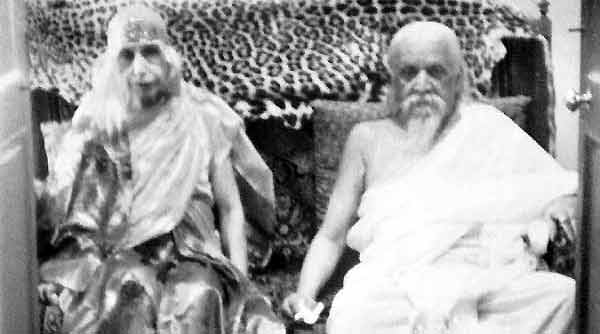
Sri Aurobindo and the Mother
A New Religion – Integral Yoga
One new “religion” that appears to embrace the type of narrative Berry describes and I support, is the Integral Yoga developed by Sri Aurobindo and The
Mother. Their insights were a result of the hours Sri Aurobindo and The Mother spent in meditation and devotion. It was a yoga realized after surmounting
“mountains of difficulties, a far heavier burden to bear than you or anybody else in the ashram or outside” and “a work such as, I am certain, none else
had to do before us” (Joshi 73), according to them. Sri Aurobindo, particularly, as well as the Mother wrote dozens of books about their experiences and
insights. And unlike the Abrahamic traditions, within Integral Yoga, plants, cells and microbes were addressed. To summarize their yoga, I rely on Gleig
and Flores, Banerji and Joshi.
“Aurobindo reinterpreted the Vedas and Vedanta philosophy through a Western evolutionary lens to produce a spiritual evolutionary metaphysics. He rejected
both traditional Indian renouncer paths and Western scientific materialism in favor of an all-encompassing or ‘integral’ model that recognized the partial
truths of both ‘spirit and nature’ and postulated an evolutionary teleology that aimed at the radical divinization of matter rather than liberation from
the world” (Gleig and Flores 42).
“Aurobindo refers to the ultimate reality as Brahman and describes it as both static and dynamic... spirit and nature... Aurobindo attempt to reunite the two
through the utilization of an involution-evolution or a descent-ascent narrative. This narrative begins with the Upanisadic notion that the ‘one without
the second’ Brahman, decided to play a game for its own enjoyment, a type of peekaboo that involved a narrowing or amnesia of its own consciousness in an
intentional act of involution... This re-ascent is not a return to an original state but the unfolding of a fundamentally new manifestation of Brahman as
divinized matter” (Gleig and Flores 42).
His solution was a new yoga, a yoga unlike anything “professed or realized in the old yogas” (Joshi 73). In this joint creation between Sri Aurobindo and
his Shakti, the Mother, was not a “retread of old walks, but a spiritual adventure” (Joshi 73). The yoga they practiced and taught was bound with the
evolutionary process not only of humanity but also with the Earth’s. The scope, goal and aim of his yoga was an “integral transformation” and “held the
notion that the goal was integral, which encompassed the totality of being and becoming” (Banerji, 30).
Their explorations into the yoga of integral transformation was “to find a process by which human beings can arrive at an integral consciousness and an
integral action of that consciousness in the world, thereby, experiencing a divine life” (Banerji 39). “The clue to the conscious integral method” for that
evolutionary movement “is a secret yoga, the Yoga of Nature” (Joshi 74). As Sri Aurobindo and The Mother experimented in the ashram “laboratory”, as they
called it, Nature – “Supreme Nature, Parā-Prakṛti, or Divine Mother” (Banerji 117), “is the principle source of the yoga here, her aspects or emanations,
active as energies and soul powers in the individual, but behind or united with these emanation of the Śakti are situated their male counterparts or
Īśvaras” (Banerji 127). ”This relationship...is the place and function of the Divine Mother as transformative agent in the process evolution we know as
yoga” (Banerji 128).
Transforming Our Cellular Consciousness
Sri Aurobindo and The Mother’s teachings were predominantly about humanity’s spiritual transformation clear down to the cellular level. In Health and Healing in Yoga, The Mother wrote about the microbes, and in Flowers and their Messages, she wrote about how flowers epitomize
devotion and demonstrate how to live in the glory of the Divine.
In The Mother, Sri Aurobindo wrote,
“If you desire this transformation, put yourself in the hands of the Mother and her powers without cavil or resistance and let her do unhindered her work
within you”(Aurobindo, Mother 57).
This insight is similar to what I have received. It means to live without fear and to listen carefully for Her through the natural world, particularly the
plants and, perhaps, even our bacterial brothers. The work Sri Aurobindo and the Mother allude to is bringing our individual consciousness clear down into
the smallest aspects of the body, the cells. Aurobindo wrote,
“Three things you must have, consciousness, plasticity, unreserved surrender. For you must be conscious in your mind and soul and heart and life and the very cells of your body, aware of the Mother and her Powers and their working; for although she can and does work in you even in your
obscurity and your unconscious parts and moments, it is not the same thing as when you are in an awakened and living communion with her” (Aurobindo, Mother
57-58).
The Mother said,
“Once you enter the path of Yoga you must get rid of all fears – the fears of your mind, the fears of your vital, the fears of your body which are lodged
in its very cells” (The Mother, Health, 32).
They recognized that not only did the mind and body need to be transformed, but the transformation had to occur at the cellular and microbial levels as
these smallest aspects of our being are part of us but not us.
“You carry within you or there are swarm about you the microbes and germs of every disease. How is it that all of a sudden you succumb to an illness which
you did not have for years? You will say it is due to a ‘depression of the vital force’. But from where does the depression come? It comes from some
disharmony in the being, from a lack of receptivity to the divine forces” (Mother, Health 30).
In a 1951 lecture, she said,
“They have discovered that for disease there is a microbe that cures it (call it a microbe if you like, anyway, some sort of germ). But what is so
extraordinary is that this ‘microbe’ is extremely contagious even more contagious than the microbe of the disease. And it generally develops under two
conditions: in those who have a sort of natural good humor and energy and in those who have a strong will to get well! Suddenly they catch the “microbe”
and get well…But I am going to tell you something: what people take to be a microbe is simply the materialization of a vibration or a will from another
world…’Matter is progressing’, it is becoming more and more receptive to a higher will” (Mother, Health 36).
Additionally, in her view, health is determined by how the state of our consciousness is “injected” at the cellular level. Each individual is a system that
needs to be transformed and in balanced alignment with the Divine whole. When we understand our own system requires that balance, it becomes easier to
understand how balance is required in the ecosystems we live on and on Earth.
Plant Consciousness
Expanding our understanding of our biome requires us to look at our relationship with the plant world. Just as bacteria have a consciousness, “We must
suppose in the plant and the metal also a force to which we can give the name of consciousness although it is not human or animal mentality for which we
have hitherto preserved the monopoly of that description” (Mother, Flowers II). In her writing, she maintained there is a difference between the
animal/human kingdoms versus the plant/mineral kingdoms which she said were not consciousness in the mental or thinking aspect. Yet, alternatively when she
lectured to her ashram about her experience in her garden in France, she seems to give a different teaching on plant consciousness.
“For all that, I believe the chicken is more conscious than the beetroot. (laughter) But I ought to tell you my own experience.
In Tokyo I had a garden and in this garden I was growing vegetables myself….And so, every morning I used to go for a walk, after having watered them and
all the rest; I used to walk around to choose which vegetables I could take for eating. Well just imagine! There were some which said to me, “No, no, no,
no, no, no….” and then there were others which called, ‘Take me, take me, take me!’ So it was very simple, I looked for those which wanted to be taken and
never did I touch those which did not.
But in France it was the same thing. I had a garden also in the south of France where I used to grow peas, radishes and carrots. Well, there were some
which were happy, when asked to be taken and eaten, and there were those which said, ‘No, no, no, don’t touch me, don’t touch me!’ (Laughter)
Why did they say that, Sweet Mother?
Well, I experimented precisely to find out; and the result was not always the same. At times it was indeed that the plant was not edible…At other times, it
happened that it was not ready…By waiting for a day or two, a day or two later it said to me, ‘Take me, take me, take me!’ (Laughter)” (Mother, Health,
197-198).
In this experiment, it appears the plants were conscious of their ripeness and prepared to communicate their desirability for human consumption; in other
words, the plants understood their earthly role as food and actively participated in it. They expressed an acceptance, a joy, in being eaten. Could this
really the case?
According to plant researchers Appel and Cocroft, their tests revealed plants responded to the sound of caterpillars chewing by creating defensive
chemicals to repel future caterpillar attacks. When they compared the sound of a gentle wind and other insects, the plants did not increase their chemical
defenses. If this research can be related to other plants, it may indicate that plants do not like to be eaten and can distinguish between sounds which
generated by predators from other vibrations. Similar to the research into bacteria, we may discover plants also have more language and consciousness then
we currently believe.
The Mother’s own experiences appear to confirm that plants respond to positive vibrations.
“The only thing I insist upon is care, gentleness, consideration as you would have for a living being – for plants are living and they feel and suffer (Mother, Flowers IV).
“Flowers are very receptive and they are happy when they are loved” (Mother, Flowers, IV).
“Just imagine, there are plants which are vain!...If one pays them compliments by words or feelings, if one admires them, well, they hold their head – with
vanity” (Mother, Flowers, III)
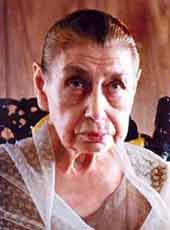
The Mother
The Mother acknowledged a level of consciousness while maintaining traditional distinction between the human, animal, vegetable and mineral kingdoms. She
relied on science to confirm that plants make conscious movements, but believes the movements do not originate from the same type of mental process humans
have. Rather flowers’ reactions are “a sub-mental, a vital consciousness which has precisely the same initial reactions as the mental, but is different in
the constitution of its self-experience, even as that which is superconscient is in the constitution of its self-experience different from the mental
being” (Mother, Flowers, II). Her teachings provide a blueprint for humanity to begin realigning ourselves with our own internal system, our human biome
and interacting with the plant and bacterial realms in a different manner. For as Thomas Berry wrote, “Our intimacy with the universe demands an
alternative presence to the smallest particles as well as the vast range of stars splashed across the skies in every direction” (Berry, 34).
Conclusion
Unlike Berry, I am not certain humanity’s continued survival is part of Mother Nature’s plan. Therefore, it is up to us to “return to the mother” by
convincing Her that our continued existence is not only relevant but beneficial for the Earth’s biome. Not only do we need to ask for her forgiveness for
all of the destruction we have perpetrated, but we need to ingratiate ourselves and to demonstrate that we know how to “play well” with our bacterial
brothers and sisters and our plant and animal cousins.
This change in consciousness must begin at a cellular level, through respecting and honoring the 99% of our biome that is not human. We need to realign
ourselves with our internal bacteria as well as the elements of water, space, air and earth which create the living system of our bodies. When we
understand ourselves as a living, conscious system of beings, then it will become easier to extend that consciousness outward and positively re-integrate
ourselves into Earth’s living matrix. This is the raising of conscious described in Integral Yoga that will meet the Divinity’s descent into the manifest.
When we accomplish this then the Earth, our bodies and all of life will become rebalanced. There will no need for Mother Nature to eliminate the human
mutation that, for a time, viewed the Universe as a machine and believed we were separate from “all that is”.
We can be certain that Mother Nature will forgive us for she understands defects. For as The Mother says, “This is the work of Nature…Manifestation is
simply diversity. It is the One deploying Himself in the innumerable, indefinitely” (Mother, Synthesis of Yoga 29). Integral Yoga carries the language of
rapprochement necessary to return balance to our Earth.
I conclude with quote from Sri Aurobindo.
No synthesis of Yoga can be satisfying which does not, in its aim, reunite God and Nature in a liberated and perfected human life, or in its method, not
only permit but favours the harmony of our inner and outer activities and experiences in the divine consummation of both. Existence descended into the
material world in which it is possible for the lower to transfigure itself and put on the nature of the higher and the higher to reveal itself in the forms
of the lower. To avoid the life which is given him for the realization of that possibility, can never be either the indispensable condition or the whole
and ultimate object of his supreme endeavor or of his most powerful means of self-fulfillment. It can only be a temporary necessity under certain
conditions or a specialized extreme effort imposed on the individual so as to prepare a greater general possibility for the race...’All life is Yoga’ (Heehs
270).
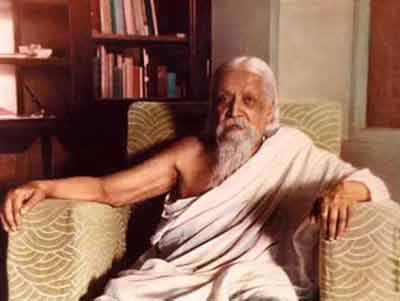
Sri Aurobindo
(Berry) (Banerji; Singleton and Goldberg; Mother Flowers and Their Messages; Joshi; Heehs The Lives of Sri Aurobindo; Heehs and Ghose;
Mother The Synthesis of Yoga: The Mother's Talks) (Mother Health and Healing in Yoga: Selections from the Mother; Aurobindo; Van Vrekhem;
Croft; Woese; Bell; Ashcraft; Bolle; White; Ann; Heehs "Sri Aurobindo and His Ashram, 1910–2010: An Unfinished History"; TED2009)
 If you value this knowledge please consider donating towards its production and dissemination worldwide in Sutra Journal. Be part of the effort to bring this knowledge to the world. Donations go towards the operating costs and promotion of the Journal.
If you value this knowledge please consider donating towards its production and dissemination worldwide in Sutra Journal. Be part of the effort to bring this knowledge to the world. Donations go towards the operating costs and promotion of the Journal.